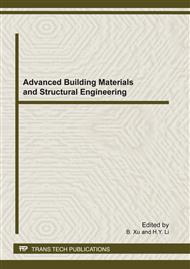p.109
p.113
p.117
p.123
p.128
p.132
p.138
p.142
p.151
Study on Driver’s Safety Sense Rule Based on Perception Speed at Daytime and Night
Abstract:
In order to ensure traffic safety on freeway, speed limit is necessary. Driver’s safety sense to different speed is not same, so it should be considered by speed limit standard. Through field experiment, the data of driver’s perception speed at daytime and night were obtained. The data at daytime and night were compared. The deviations of perception speed were analyzed under different conditions of driving speed and highway alignment at daytime and night. Driver’s safety senses were classified as four levels of very safe, safe, dangerous and very dangerous. The relation between driver’s safety sense level and perception speed was analyzed. It shows that driver’s perception speed corresponding different safety sense level at daytime and night are also different.
Info:
Periodical:
Pages:
128-131
Citation:
Online since:
February 2012
Authors:
Keywords:
Price:
Сopyright:
© 2012 Trans Tech Publications Ltd. All Rights Reserved
Share:
Citation:


